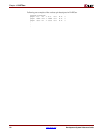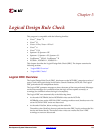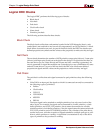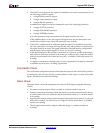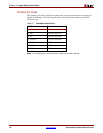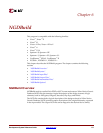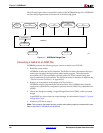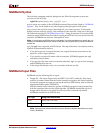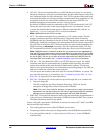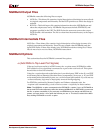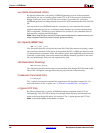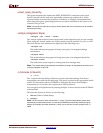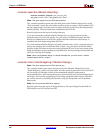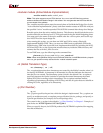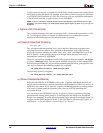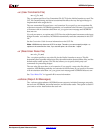
120 www.xilinx.com Development System Reference Guide
Chapter 6: NGDBuild
R
• UCF file—The User Constraints File is an ASCII file that you create. You can create
this file by hand or by using the Constraints Editor. See the online Help provided with
the Constraints Editor for more information. The UCF file contains timing and layout
constraints that affect how the logical design is implemented in the target device. The
constraints in the file are added to the information in the output NGD file. For
detailed information on constraints, see the Constraints Guide.
By default, NGDBuild reads the constraints in the UCF file automatically if the UCF
file has the same base name as the input design file and a .ucf extension. You can
override the default behavior and specify a different constraints file with the –uc
option. See “–uc (User Constraints File)” for more information.
Note:
NGDBuild allows one UCF file as input.
• NCF —The netlist constraints file is produced by a CAE vendor toolset. This file
contains constraints specified within the toolset. The netlist reader invoked by
NGDBuild reads the constraints in this file if the NCF has the same name as the input
EDIF netlist. It adds the constraints to the intermediate NGO file and the output NGD
file. NCF files do no bind to NGC files because they are read in and annotated to the
NGO file during an edif2ngd conversion. This also implies that unlike UCF files,
NCF constraints only bind to a single edif netlist; they do not cross file hierarchies.
Note:
NGDBuild checks to make sure the NGO file is up-to-date and reruns edif2ngd only
when the EDIF has a timestamp that is newer than the NGO file. Updating the NCF has no affect
on whether edif2ngd is rerun. Therefore, if the NGO is up-to-date and you only update the NCF
file (not the EDIF), use the
–nt on option to force the regeneration of the NGO file from the
unchanged EDIF and new NCF. See “–nt (Netlist Translation Type)” for more information.
• URF file — The User Rules File (URF) is an ASCII file that you create. The Netlist
Launcher reads this file to determine the acceptable netlist input files, the netlist
readers that read these files, and the default netlist reader options. This file also
allows you to specify third-party tool commands for processing designs. The URF can
add to or override the rules in the system rules file.
You can specify the location of the user rules file with the NGDBuild –ur option. The
user rules file must have a .urf extension. See “–ur (Read User Rules File)” or “User
Rules File” in Appendix B for more information.
• NGC file—This binary file can be used as a top-level design file or as a module file:
♦ Top-level design file
This file is output by the Xilinx Synthesis Technology (XST) tool. See the
description of design files earlier in this section for details.
Note:
This is not a “true” netlist file. However, it is referred to as a netlist in this context to
differentiate it from the NGC module file. NGC files are equivalent to NGO files created by
edif2ngd, but are created by other Xilinx applications: XST and CORE Generator.
• NMC files—These physical macros are binary files that contain the implementation of
a physical macro instantiated in the design. NGDBuild reads the NMC file to create a
functional simulation model for the macro.
Unless a full path is provided to NGDBuild, it searches for netlist, NGC, NMC, and MEM
files in the following locations:
• The working directory from which NGDBuild was invoked.
• The path specified for the top-level design netlist on the NGDBuild command line.
• Any path specified with the “–sd (Search Specified Directory)” on the NGDBuild
command line.



